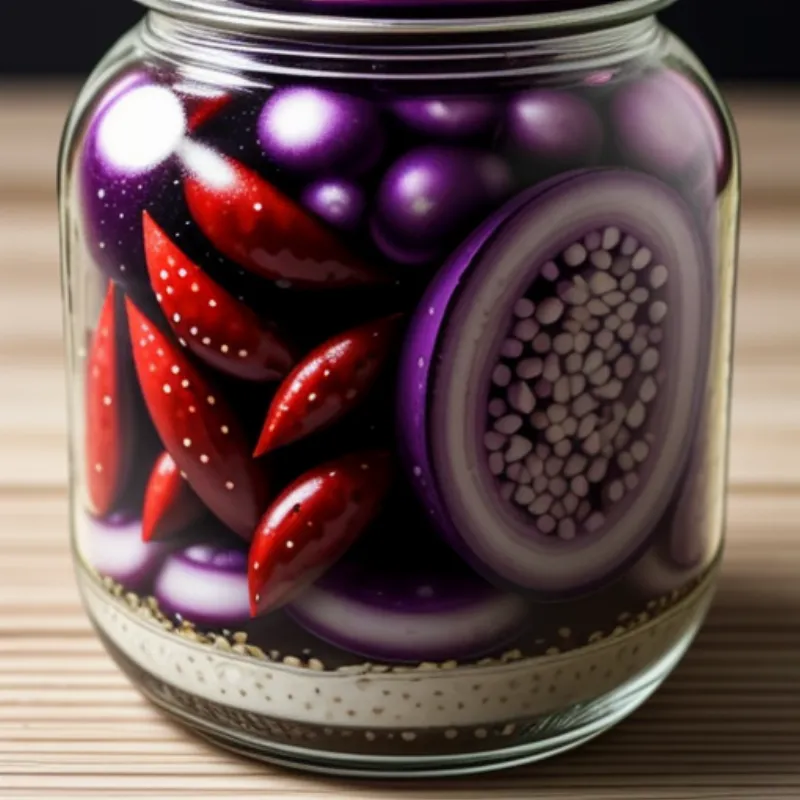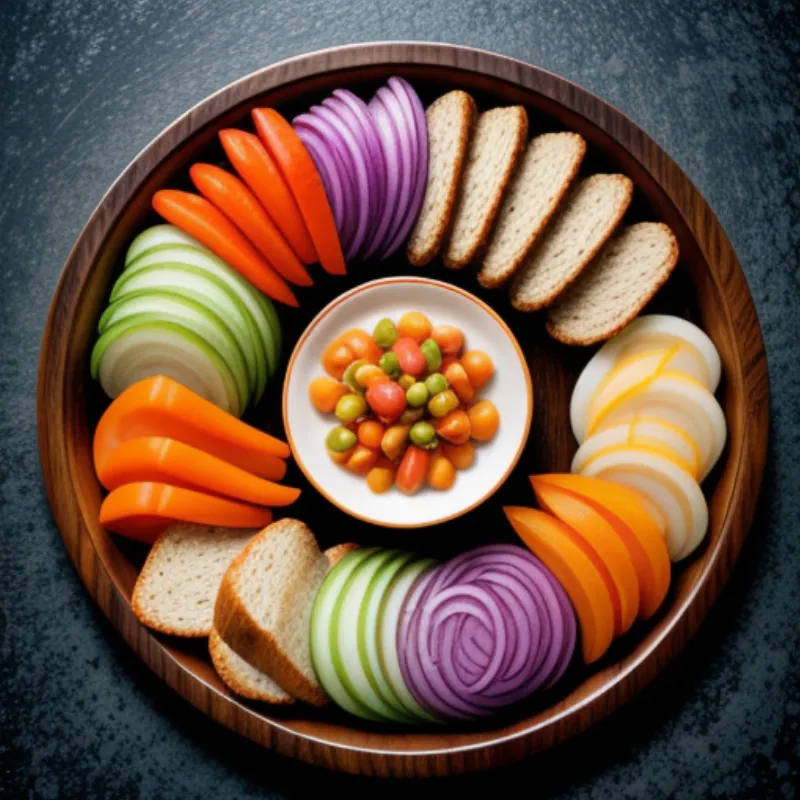Pickled eggplant, or as some like to call it, “eggplant pickles,” is a true culinary chameleon. This versatile dish can be a zesty appetizer, a tangy side to grilled meats, or a flavorful addition to sandwiches and salads. It’s a symphony of textures and tastes, offering a delightful crunch with a burst of savory, tangy, and subtly spicy notes.
If you’ve never tried making your own pickled eggplant, you’re in for a treat! This recipe will guide you through a simple fermentation process that transforms ordinary eggplants into a flavor-packed delicacy. Let’s dive into the world of pickling and create something delicious!
Gathering Your Ingredients
Before we begin our pickling adventure, let’s gather our culinary tools and ingredients:
- Eggplants: Choose 2 pounds of firm, small to medium-sized eggplants. Look for ones with smooth, glossy skin and vibrant color.
- Salt: You’ll need 4 tablespoons of kosher salt for brining. Using kosher salt ensures proper fermentation and a crispier texture.
- Water: 4 cups of filtered water for the brine, ensuring a clean start for our fermentation process.
- Vinegar: 1 cup of white vinegar, contributing to the tangy flavor and acting as a natural preservative.
- Garlic: 4 cloves, peeled and lightly crushed.
- Red pepper flakes: 1 teaspoon, or adjust to your spice preference.
- Optional additions: For an extra layer of flavor, consider adding 1 teaspoon of black peppercorns, 2 bay leaves, or a sprig of fresh dill.
Tools for Pickling Perfection
The beauty of pickling lies in its simplicity. You won’t need any fancy equipment:
- Large bowl: This will be our brining station for the eggplant.
- Cutting board and knife: For prepping our star ingredient.
- Small saucepan: To simmer our pickling liquid to perfection.
- Jar or container: Choose a glass jar or a food-safe container for storing your pickled eggplant.
The Pickling Process
Now, let’s transform those eggplants into pickled goodness!
-
Preparing the eggplant: Slice the eggplants into rounds about 1/4 to 1/2 inch thick. Don’t go too thin, as they will soften during the fermentation process.
-
Brining for crunch: In the large bowl, dissolve the salt in the water. Add the eggplant slices and ensure they’re fully submerged. You can place a plate or a smaller bowl on top to keep them down. Allow the eggplant to brine for at least 2 hours, or up to 4 hours. This crucial step draws out excess moisture, enhancing the texture and flavor.
-
Creating the pickling liquid: While the eggplant brines, let’s make the pickling liquid. Combine the vinegar, garlic, and red pepper flakes in a small saucepan. Bring it to a simmer over medium heat, allowing the flavors to meld. Once simmering, remove from the heat and set aside to cool.
-
Packing the jar: After brining, rinse the eggplant slices thoroughly under cold water and pat them dry. Now, it’s time to pack them into your sterilized jar, layering them with the cooled pickling liquid. Ensure the eggplant is completely submerged.
-
Time for fermentation: Seal the jar tightly and let it work its magic at room temperature for at least 3 days, or up to a week. During this time, the natural fermentation process will work its magic, developing those delightful tangy flavors.
 Pickled Eggplant Jar
Pickled Eggplant Jar
Tips for Pickling Success
- Taste as you go: Pickling is all about customization. Feel free to adjust the spices and flavors to your liking. Want it spicier? Add more red pepper flakes!
- Experiment with textures: Play around with the eggplant cut. You can try lengthwise slices, cubes, or even leave them whole if they’re small enough.
- Patience is key: Fermentation takes time. Allow your pickled eggplant to develop its full flavor potential by fermenting for at least the minimum recommended time.
Serving and Enjoying
Your pickled eggplant is ready to shine! Serve it as part of a vibrant antipasto platter, alongside crusty bread and your favorite cheeses. Add it to salads for a tangy kick, or use it to elevate sandwiches and wraps.
 Pickled Eggplant Platter
Pickled Eggplant Platter
Pickled eggplant is incredibly versatile and can be stored in the refrigerator for several weeks.
Frequently Asked Questions
Can I reuse the pickling liquid?
While you can technically reuse the pickling liquid once, it’s best to start fresh each time for optimal flavor and texture.
My pickled eggplant is too salty. What can I do?
If you find your pickled eggplant too salty, try soaking it in cold water for 30 minutes to an hour before serving. This will help mellow out the saltiness.
Making pickled eggplant is a rewarding experience that allows you to enjoy the unique flavors of fermentation. Give this recipe a try and experience the joy of creating delicious, tangy treats in your own kitchen. Happy pickling!
